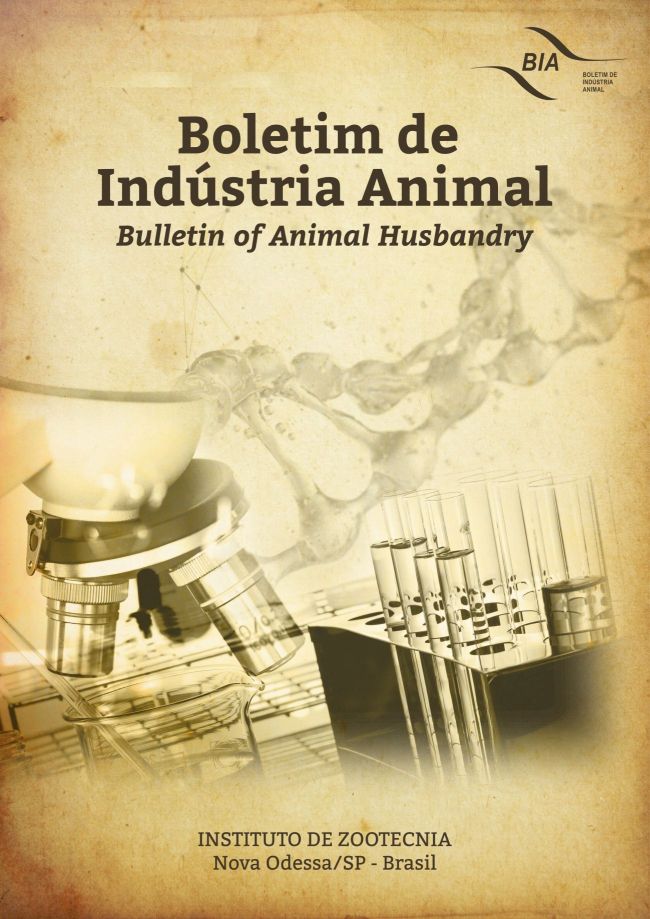Detection of Genes Related to Growth Traits in Sheep in Copy Number Variation Regions
Palavras-chave:
CNVR, Santa Ines, Structural variationResumo
In Brazil, the Santa Ines sheep breed has aptitude for meat production, standing out for its rusticity and high productivity. Genomic studies in poorly studied breeds are of great importance, as they make it possible, through genotyping, to find sources of structural variations in the sheep genome. Copy number variations (CNV) are the major source of structural variation among individuals, which are defined as modifications in the genome where the number of copies of a genomic DNA sequence differs from a reference genome. These studies make it possible to advance knowledge of the genomes of poorly studied species such as sheep. Thus, the aim of this study was to identify genes related to growth traits in Santa Ines sheep bred in copy number variation regions (CNVR). A total of 638 animals were genotyped with the Ovine SNP50 Genotyping BeadChip (Ilumina). Markers with unknown genomic position and located on sex chromosomes in the reference genome Oar_v 3.1 were excluded. The adjustment of the GC content was performed to reduce the rate of false positive CNVs, considering 500 Kb around each SNP. CNV detection was performed with the PennCNV software, where CNVs identified in only one sample, with fewer than three SNPs, BAF drift>0.01 and GC wave factor>0.09 were excluded. CNVRs were inferred by concatenating individual CNVs identified in more than one animal using the CNVRuler software, excluding genomic regions with an allelic frequency lower than 0.5% and with recurrence <0.1. A total of 742 CNVs (357 deletions and 385 duplications) were detected, which were grouped in 360 CNVRs (224 gain, 132 loss and 4 both) detected on all autosomal chromosomes. The CNVRs inferred in this study had an average size of 142,655€‰bp (from 12,139 to 2,643,483€‰bp), covered 2.03% of the autosomal genome sequence, and had frequencies ranging from 0.31% to 4.85% in this population. The OAR1 showed the largest number of CNVRs (40), while the OAR20 presented the smallest number of CNVRs (3). A total of 832 Ensembl ID from protein-coding genes were identified in these CNVRs. Subsequently, functional enrichment analysis was performed with the DAVID software and revealed 44 Gene Ontology terms and 8 enriched KEGG pathways (P<0.05). Among the genes identified in the CNVRs, we highlight the following genes related to muscle growth and development: CCNT2, UNC45B, DYNC1LI2, KLHL40, MYH1, CORO1B and KMT5B. In addition, we also identified genes related to ossification, such as NLE1, W5P5S7_SHEEP, COL1A1, TCIRG1, GIT1, W5P1A2_SHEEP and BCL. The results of the present study provide information to help understand the genetic architecture of growth traits in sheep, their possible impacts on productive traits, and future investigations, being especially useful for researchers interested in structural variations in the sheep genome.
Downloads
Downloads
Publicado
Edição
Seção
Licença
Os autores não serão remunerados pela publicação de trabalhos, pois devem abrir mão de seus direitos autorais em favor deste periódico. Por outro lado, os autores ficam autorizados a publicar seus artigos, simultaneamente, em repositórios da instituição de sua origem, desde que citada a fonte da publicação original seja Boletim de Indústria Animal. A revista se reserva o direito de efetuar, nos originais, alterações de ordem normativa, ortográfica e gramatical, com vistas a manter o padrão culto da língua e a credibilidade do veículo. Respeitará, no entanto, o estilo de escrever dos autores. Alterações, correções ou sugestões de ordem conceitual serão encaminhadas aos autores, quando necessário. Nesses casos, os artigos, depois de adequados, deverão ser submetidos a nova apreciação. As opiniões emitidas pelos autores dos artigos são de sua exclusiva responsabilidade. Todo o conteúdo deste periódico, exceto onde está identificado, está licenciado sob a Licença Creative Commons Attribution (CC-BY-NC). A condição BY implica que os licenciados podem copiar, distribuir, exibir e executar a obra e fazer trabalhos derivados com base em que só se dão o autor ou licenciante os créditos na forma especificada por estes. A cláusula NC significa que os licenciados podem copiar, distribuir, exibir e executar a obra e fazer trabalhos derivados com base apenas para fins não comerciais.













